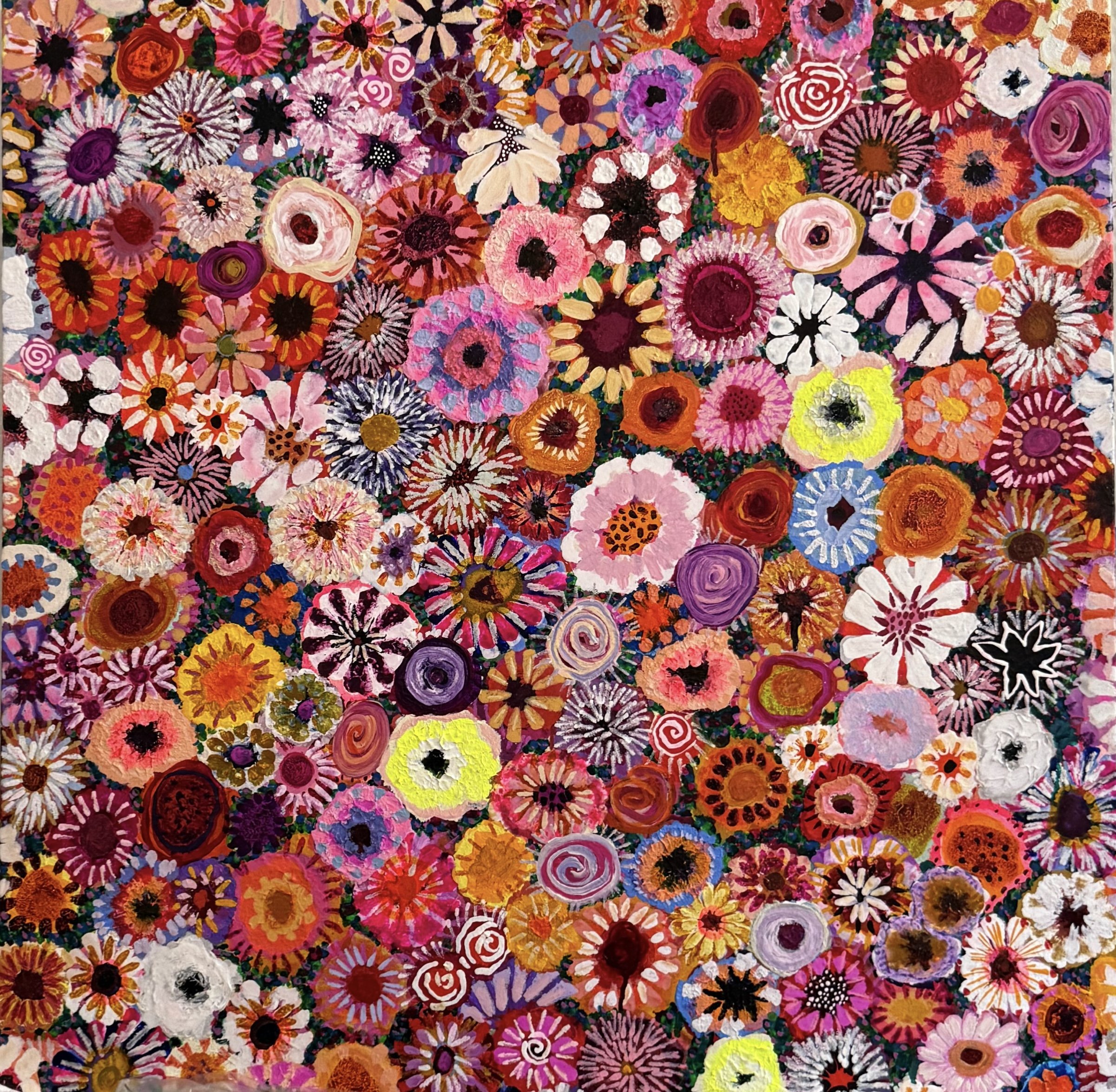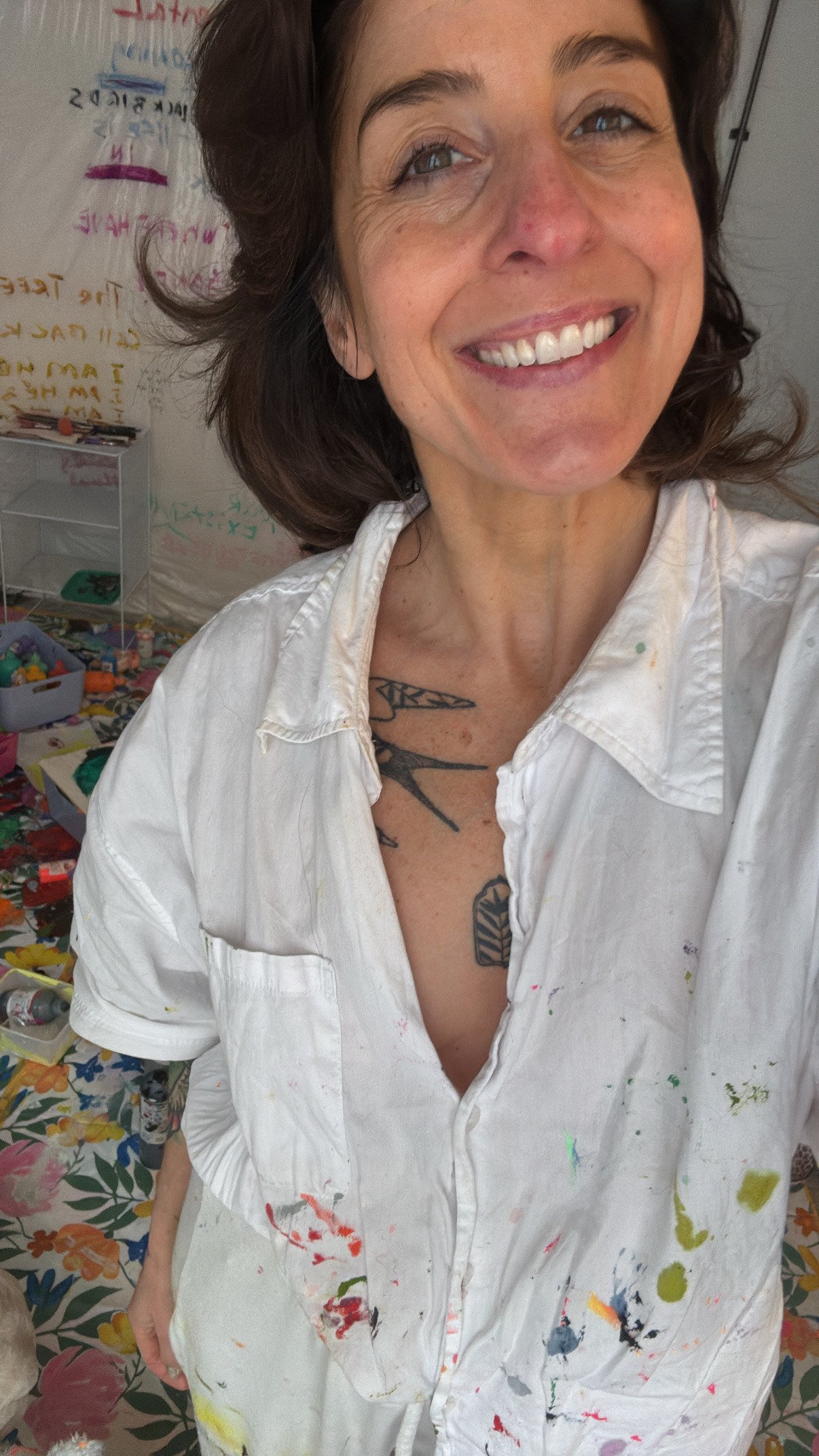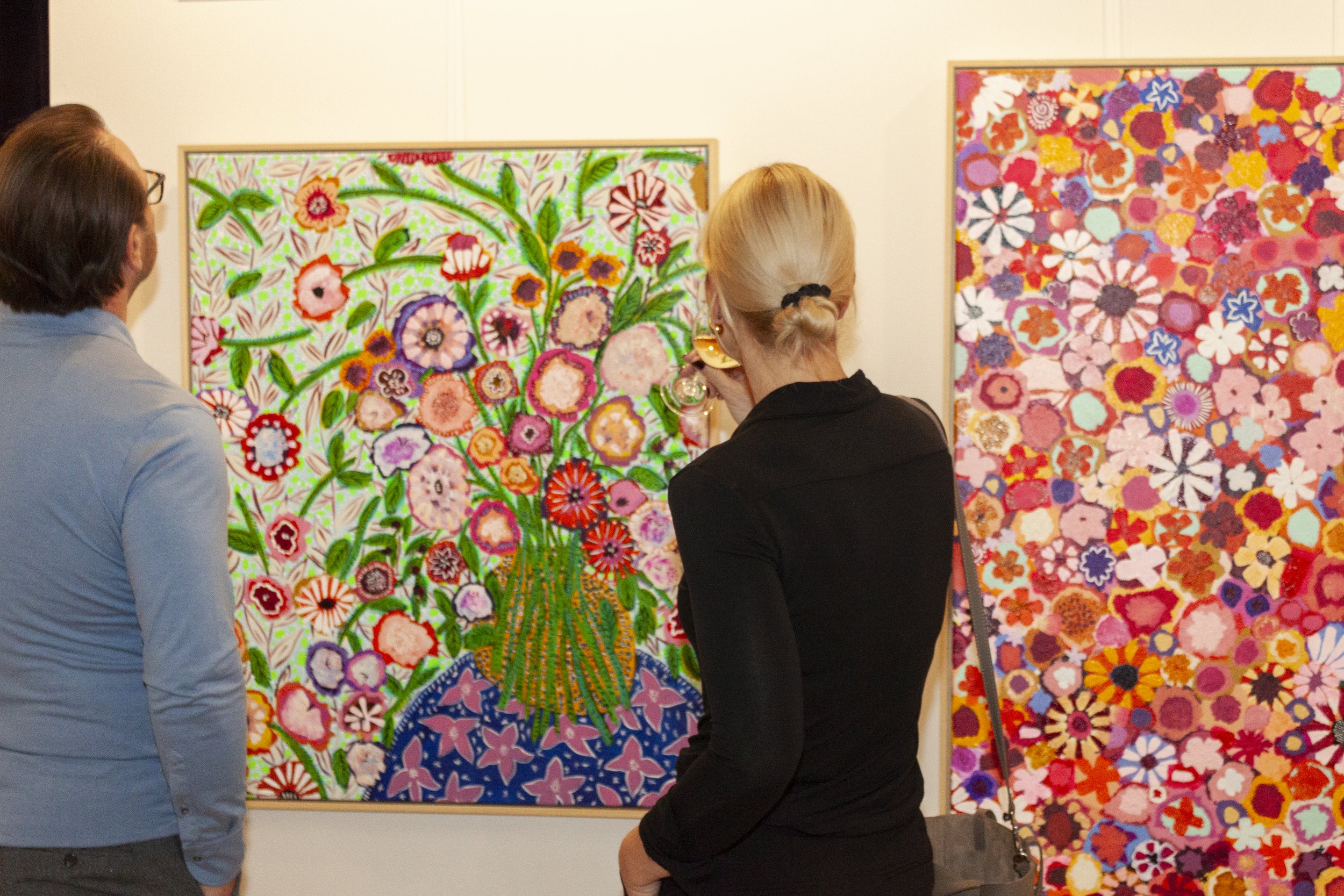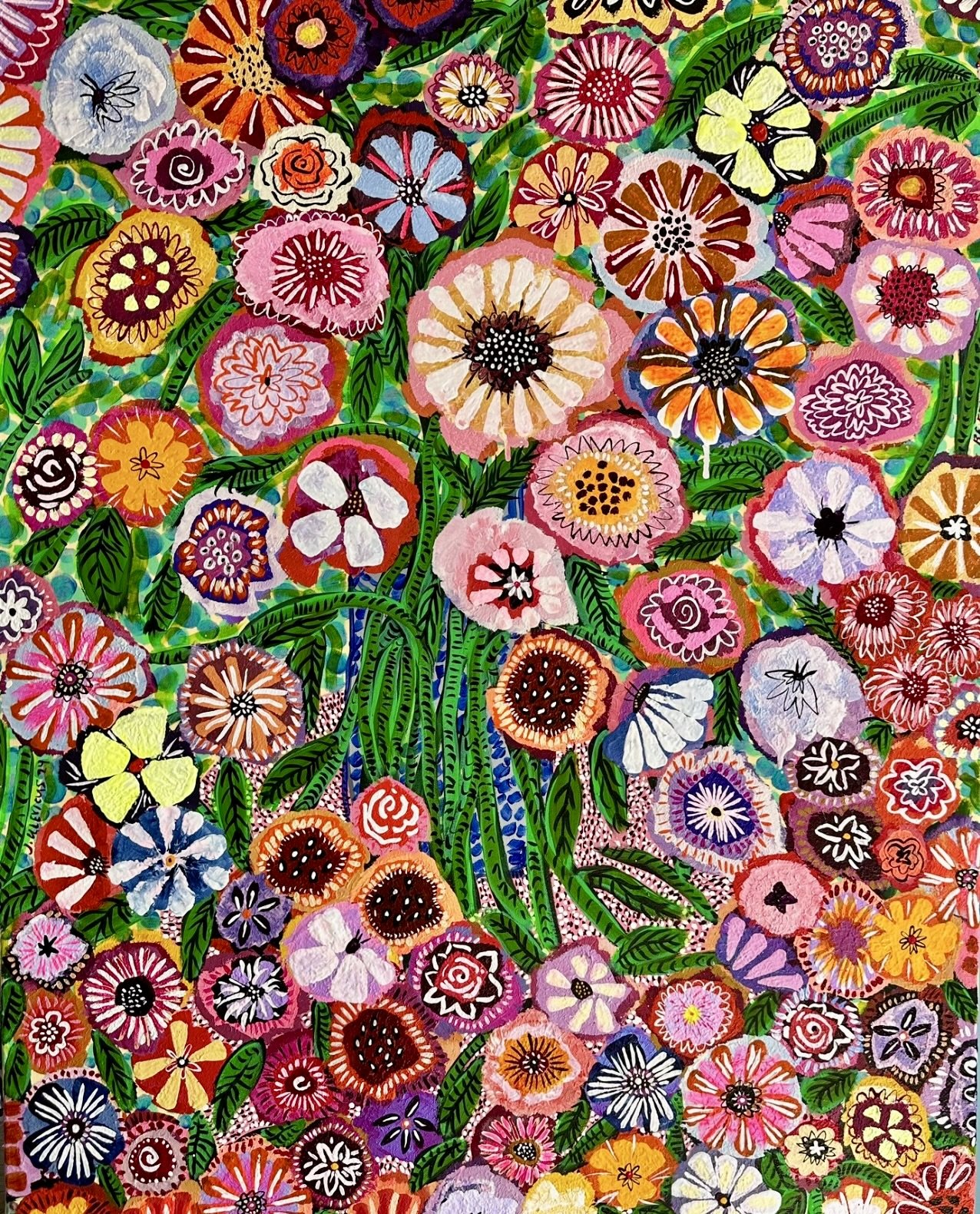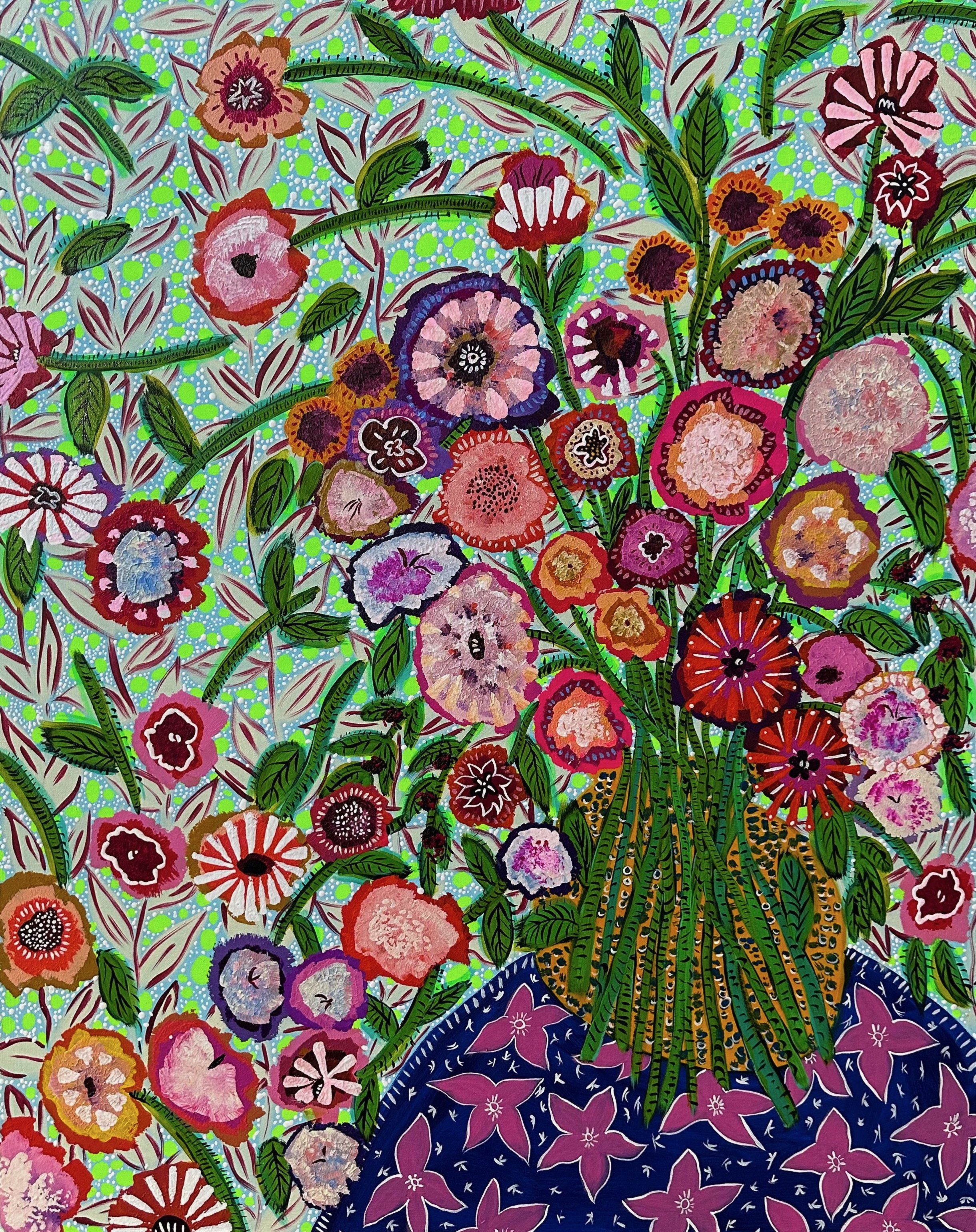Jocelyn Ulevicus on Art, Healing, and the Power of Floral Motifs
Jocelyn Ulevicus (1979) is an American artist, writer, and poet who explores her experiences as a woman growing through and beyond loss and trauma. Her work is either forthcoming or published in magazines such as The Laurel Review, SWWIM Every Day, and The Free State Review, amongst others. She loves ice cream and French cinema, and her favorite quality in a person is kindness to strangers and animals. She currently resides in Paris.
Background
I am an Italian-American contemporary artist, writer, and poet living in the Netherlands (b. 1979). As an intuitive artist grounded in body awareness, my work explores themes of femininity, loss, trauma, and healing, realized through poetry, memoir, and colorful floral motifs, with recent exhibitions in Amsterdam, Rotterdam, and Mexico City. I am adept at working independently while fostering community connections. My work is committed to bringing forth more critical speculation, healing, and beauty through multimedia artistic projects. Lastly, my written work has been globally recognized and published. I am a two-time Pushcart Prize nominee.
In 2015, I left my doctoral studies in the Health Sciences to pursue writing following the sudden and traumatic death of my father, and previously, my mother. By the time I was in my mid-thirties, I had become an orphan and felt exiled from the rest of the world by grief. It wasn’t only the deaths of my parents that I would come to survive, but a familial legacy of violence, mental illness, and trauma. Writing and, ultimately, making art became not just a path of healing but a modus of complete and total annihilation of who I was before, contrasting with the structural forces that raised me—beyond being a survivor of sexual assault and domestic violence—into a vital, living, breathing woman.
I work primarily with acrylic on canvas because I like working fast, though I sometimes explore spray paint, oils and cold wax, oil pastels, watercolors, ink, and pencil. When I set out to create a new work, I always begin with a single brushstroke, drawing on Maria Lassnig’s method of body awareness, asking myself: What am I feeling and experiencing in the body, and what might that look like if I were to make it visual? Through mark-making and layering, what often begins as loose abstraction reveals itself into rich floral motifs.
Someone can view my work as joyful, playful, exploratory, and urgent. While optimism is present, my process can take me from swells of grief or rage, and only in a peak moment of resolution do they reveal themselves in pristine clarity to be something akin to joy.
Interview
Your work intertwines themes of femininity, loss, and healing. How has your artistic practice evolved as you’ve moved through different stages of your personal journey?
As a trauma survivor, bereaved daughter, and single, childless, aging woman, I create as a way to repurpose my experiences and find meaning in them. The flowers I paint represent more than just floral imagery; they serve as a medium through which I explore the ever-changing landscape of both my understanding and acceptance of my subjectivity, while also embracing the fundamental truth of change. I am fascinated by the many ways I can paint flowers, which parallels the various ways I can both navigate and live my life. As a tangible, material thing, I suppose my work shows that there is life beyond pain; that there is more within to release forth into blossom. Where my creative practice and healing journey intersect, my artistic practice is constantly evolving. If I have learned anything, it is this: healing is a ceaseless process of breaking and becoming again, and then again, until you are whole. And this wholeness is expressed every day through minor acts of repetition as a ritual of transformation. In a way, the flowers I paint are emblematic of this repetitive act.
But before all of this self-knowledge, there was creating as a means of survival. I had no idea how to be in the world once I began to confront and process the deaths of my parents, traumatic memories, and other losses. Naming my feelings felt like an impossible feat, but I could experience them and give them color, texture, and shape through my visual work.
At this point in my journey, I am increasingly drawn to slowing down my process and allowing my work to evolve with my day-to-day emotional life. Instead of finishing works in a single day, I now allow them to evolve over days, weeks, even months. There is no rushing—no sense of great urgency, which is counter to how I felt at the beginning.
Flowers play a significant role in your paintings, often moving beyond traditional still life into something more dynamic. What draws you to floral motifs, and how do they serve as a metaphor in your work?
The floral motif has evolved as a means for me to explore radical joy and the Buddhist theme of impermanence. Last year, I started painting flowers appearing to jump, leap, or fly. Thematically, this has become a way to express change, as well as the freedom that comes with acceptance and letting go.
Your process begins intuitively, with a single brushstroke leading to the next. Can you describe how this approach shapes the final composition and emotional impact of your paintings?
I have a strong interest in how colors interact on the canvas. The colors are arranged in no specific order but are rather influenced by each brushstroke, as well as the various textures and viscosity of the paints I use. Each brushstroke resonates with me as I work, gaining emotional intensity. The concept of a flower serves merely as a spatial reference or pretext for creating a space filled with vibrant tones, and the emotional or visceral experience ultimately depends on the viewer and their own life story—not mine.
You’ve drawn inspiration from a range of artists, from Dutch still-life painters to Joan Mitchell and Agnes Martin. How do these influences merge in your work, and what do you take from each of them?
I would say that my interest in light and color intersects with most of these artists, as well as a shared love for nature—including the wildness of being human.
Your work invites viewers into a space of deep reflection. What emotions or thoughts do you hope people walk away with after engaging with your paintings?
I suppose I hope that something in my work mirrors something otherwise unknown within themselves. Mainly, I want people to feel. It’s a radical thing to live with heart.


